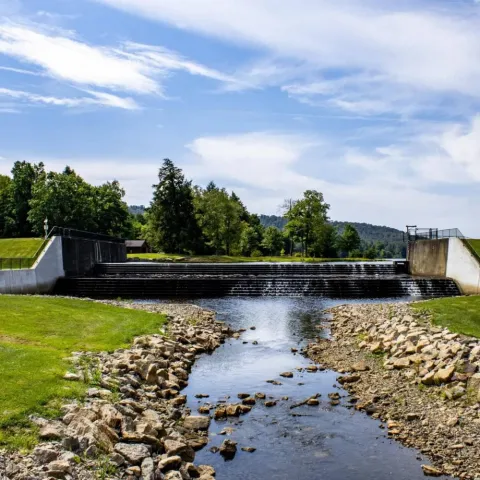Clarendon
As one of four early locations settled within Mead Township, the village of Clarendon has had a hard-fought struggle to maintain its status throughout its history. Thought by many early settlers to be a mere product of the oil operations and excitement sweeping through the area at that time, life in Clarendon was expected to falter along with the oil industry. Proving everyone wrong, Clarendon maintained its stronghold in the township and flourished into a growing borough community.
First noted in 1871, the wealthy and prominent businessmen F.H. Rockwell of Honesdale, Pennsylvania, and Thomas Clarendon of New York, under the firm name of Rockwell & Clarendon, developed both a sawmill and a tannery in the small location, first known as Pattonia. Initially named for Thomas Patton, a contractor credited with constructing roads in and throughout the area, the village of Clarendon came to be known as such in 1872 in honor of Thomas Clarendon.
Established as a borough in 1882, much of the early land in Clarendon was leased by only three to four landowners. As a primary lease owner, Cornelius Elston controlled most of the land in Clarendon’s early history.
The Brown Brothers & Co. firm of North Clarendon enacted the first enterprise of importance to the village. Erecting a planing mill in April of 1876, over two million feet of lumber was planed and worked up until supplies ran short. In 1878, a prominent sawmill was built in a neighboring location. Also in 1878, the excitement over oil came to a head as brothers John and Edward Eagan and R.B. Jones of New York dug a “wildcat” well on the Eagan’s property. Their venture proved successful, and they constructed a second well before selling out to the Anchor Petroleum Company some years later.By the mid-1880s, over 500 wells were in operation within and surrounding the village of Clarendon, thus establishing their stronghold as an oil-producing village. In the summer of 1882, the Farnsworth Valley Railroad, which ran from Clarendon to Garland, was completed, and regular train schedules began running along the route. Devastating the village, what is now known as the “great fire” sparked on the eve of July 4, 1887. Despite their best efforts, the volunteer fire department, which was first established in 1882 and known as the Brown Hose Company, managed to contain the blaze after the furious blaze engulfed several businesses and roughly 150 homes.
The fire left more than 1,000 people homeless and caused more than a quarter of a million dollars in damage to the village. It took several years to clean up and repair the damages, but life in Clarendon once again returned to normal, and the village continued to flourish. Almost 120 years after the “great fire,” the Clarendon Volunteer Fire Department, both past and present, remains a strong source of pride within the Clarendon community.
